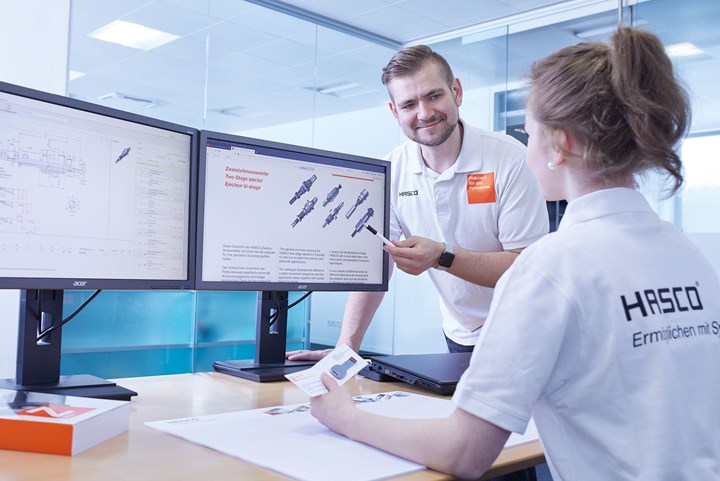Hasco Gears Standard Engineering Tool Toward Mold Designers
The offline tool adds to Amerimold exhibitor Hasco’s online portal. It enables consistent access to more than 100,000 quality mold units, current product data and is available for all conventional CAD systems.

Photo Credit: Hasco America Inc.
In addition to features such as moldmaking assistant, the generation of parts lists and direct and easy ordering of quality mold units, Hasco has added the SET (Standard Engineering Tool) to its online portal. According to Hasco, the newly developed offline software program is geared specifically to the needs of mold designers, with the ability to adapt to an individual’s needs for increased efficiency.
Once installed, users are able to utilize the entire product library comfortably at the CAD workstation. Regular updates are said to guarantee the user access to more than 100,000 quality mold units and current product data. With just a few clicks and with the integrated layout editor, personalized mold structures can be easily configured. Furthermore, interfaces are available for all conventional CAD systems, and models of the products can be directly imported and exported. The moldmaking assistant from the Hasco portal provides additional support.
More specifically, for U.S. customers, the Hasco SET offline program is said to enable quote requests to be submitted without requiring online registration.

Exhibitor: Hasco
Booth 546 (P)
Related Content
-
Three Good Reasons to Switch from Three- to Five-Axis Machining in Moldmaking
Five-axis machining technology is a great tool in the moldmaker toolbox.
-
Tips for Tackling Mold Design, Machining, Cutting Tool and Wear Challenges
Tips for tasks ranging from reducing risk in part design and taking advantage of five-axis machining to refining cutting tool performance and reducing wear with guiding and centering systems.
-
Four Micro Tooling Considerations
Issues involving gating, ejection, mold splits and direction of pull are of special concern when it comes to micro tooling.












